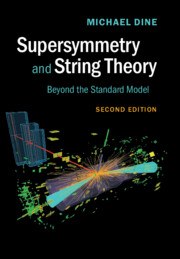Preface to the Second Edition
Summary
Much has happened since the appearance of Supersymmetry and String Theory: Beyond the Standard Model in 2006. The LHC, after a somewhat bumpy start, has performed spectacularly, discovering what is almost certainly the Higgs particle of the simplest version of the Standard Model in 2012, reproducing and improving a broad range of other Standard Model measurements and excluding significant swathes of the parameter space of proposed ideas for Beyond the Standard Model (BSM) physics.
There have also been important observational and experimental developments in astrophysics and cosmology. The WilkinsonMicrowave Anisotropy Probe (WMAP), the Planck satellite and a variety of other experiments have greatly improved our understanding of the cosmic microwave radiation background. We have more reliable measures of the dark matter and dark energy densities and a good measurement of the spectral index, ns. It is likely that we will soon have some information on, and possibly a measurement of, the scale of inflation coming from studies of B-mode polarization. At the same time, direct and indirect searches for weakly interacting massive particle (WIMP) dark matter have significantly constrained the space of masses and couplings. However, there remain, as of the time of writing, some intriguing anomalies. Furthermore, axion searches have made significant progress and are probing significant parts of the plausible parameter space.
On the theoretical side there have been a number of developments. Within the study of the Standard Model, there has been enormous progress in QCD computations; indeed, these have played an important role in the Higgs discovery. Lattice gauge theorists have continued to make strides in computation of quantum chromodynamics (QCD) quantities, such as quark masses, while embarking on the study of theories relevant to issues in BSM physics. Within supersymmetric models, metastable dynamical supersymmetry breaking has emerged as both an interesting feature of supersymmetric dynamics and a possible mechanism for supersymmetry realization in nature. Other important new ideas include general gauge mediation.
But perhaps the most important theoretical development has been the response to the Higgs discovery, as well as BSM (particularly supersymmetry) exclusions. The observed Higgs mass is compatible with supersymmetry only if the superpartners are quite heavy (tens of TeV) or under special circumstances. Many other BSM ideas face similar challenges.
Information
- Type
- Chapter
- Information
- Supersymmetry and String TheoryBeyond the Standard Model, pp. xviii - xixPublisher: Cambridge University PressPrint publication year: 2016
